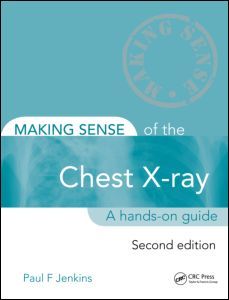Description
Making Sense of the Chest X-ray (2nd Ed.)
A hands-on guide
Making Sense of Series
Author: Jenkins Paul
Language: English
Subjects for Making Sense of the Chest X-ray:
Keywords
Young Men; Cryptogenic Fibrosing Alveolitis; The systematic approach; Coal Worker’s Pneumoconiosis; The mediastinum and the hila; Pneumocystis Pneumonia; Consolidation; collapse and cavitation; Atrial Septal Defect; Pleural disease; Pulmonary Alveolar Proteinosis; The hypoxaemic patient with a normal chest radiograph; Left Lower Lobe Collapse; Thrombo Embolic Disease; Bilateral Hilar Lymphadenopathy; Mediastinal Lymph Node Enlargement; Pleural Fluid; Pleural Calcification; Hilar Shadows; Hilar Enlargement; Round Atelectasis; Catamenial Pneumothorax; Lymphangitis Carcinomatosa; Pneumocystis Carinii Pneumonia; Abnormal Gas Exchange
Approximative price 41.94 €
In Print (Delivery period: 14 days).
Add to cartSupport: Print on demand
Description
/li>Contents
/li>Biography
/li>
When a patient presents to the emergency department, in the GP practice, or in the outpatient clinic with a range of clinical signs, the chest x-ray is one of the most valuable diagnostic tools available to the attending physician. Accurate interpretation and understanding of the chest x-ray is therefore a crucial skill that all medical students and junior doctors must acquire to formulate quickly an appropriate management plan. Making Sense of the Chest X-ray is here to help.
The second edition of this well-received pocket guide remains the perfect introduction to the subject. Written from a problem-oriented approach, the author shares his extensive experience of teaching this subject, with "real life" scenarios interspersed throughout the text. Making Sense of the Chest X-ray offers:
? Advice on when to seek additional/expert opinion
? Suggestions on how to deal with particularly difficult areas
? An emphasis on the link between radiographic appearance and clinical finding
The systematic approach. The mediastinum and the hila. Consolidation, collapse and cavitation. Pulmonary infiltrates, nodular lesions, ring shadows and calcification. Pleural disease. The hypoxaemic patient with a normal chest radiograph. Practice examples and ‘fascinomas’.
Paul F. Jenkins is Winthrop Professor of Medicine at University of Western Australia, Perth Royal Hospital and Joondalup Health Campus, Perth, Australia




